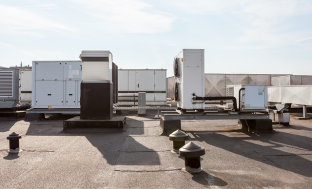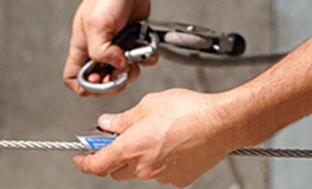latest news
What is EN 795:2012?
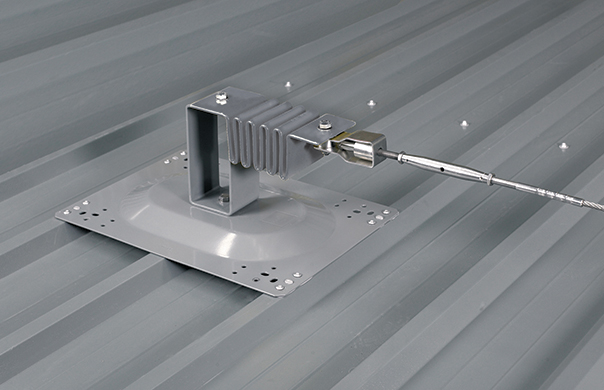
By Mark Dolan, General Manager, Roof Edge Fabrications
We recently reported that the KeeLine horizontal lifeline system had been redesigned to include streamlined components, a base plate specifically for use on membrane roofs and enhanced safety features. But that’s not all; the upgraded version of KeeLine has also been tested to ensure compliance with EN 795:2012.
What is EN 795?
For a fall arrest system such as a lifeline to function properly, you need to be sure that an essential part of a system, the anchor, will be able to sustain the maximum dynamic force generated as a result of a fall from height. EN 795 relates to the requirements and testing for anchor devices and was originally introduced in 1996 to enable the CE marking of fall protection anchor devices. The standard specified five classes of anchors, A, B, C, D & E.
Horizontal lifeline systems come under Class C.
The standard was updated in 1997, and most recently it was updated by CEN/TC 160 and ratified in 2012 to become BS EN 795:2012 Personal fall protection equipment. Anchor devices.

What’s New?
The update ensures that European anchor devices perform the same and eliminates anchor devices being classified as for ‘fall restraint purposes’only. A lifeline system can still be used as fall restraint, but the anchor devices must have been tested to the requirements of fall arrest as it is difficult to guarantee that once installed, the system is only ever used as restraint.
Much of the standard remains the same; the main differences are that the standard has been split in terms of harmonisation. Currently Types B & E products were harmonised in December 2015 and can be CE marketed under the PPE Directive as these products are removable from the structure, rather than be permanently fixed as specified in previous versions. Types A, C & D are now likely to be harmonised under the Construction Products Regulations, CEN/TC 128 is reviewing the loading criteria of EN 795 2012 and CEN/TC 16415 to establish if this is suitable. For multi-users, EN 795 refers to CEN Technical Specification (CEN/TS 16415:2013) which addresses the test methods for an anchor point that is to be used by more than one user. CEN/TS 16415 outlines the requirements which need o be met in order to ensure the anchor is able to withstand a minimum of two users falling onto the system at the same time.
Under the revised standard, anchors are now referred to as Type rather than Class
2012 Testing Methods
The most fundamental requirement of EN 795 2012 is that the manufacturer must test its product in the substrate it is going to be connected to when being used as a fall arrest system. There are 1000s of different roof profiles, all of which will have different strength characteristics depending upon the thickness of the roof sheet, together with its span and crown profile. Some roof sheets which are 0.7mm thick will pass a series of tests, whilst others with different profiles will fail. Equally the fixings are just as important. There are different sized rivets, toggles and standing seam clamps, all of which will perform differently dependent upon the specified roofing sheet.
The manufacturer must demonstrate that the fall protection systems, PPE, substrate and method of fixing are compatible and provide a safe installation.
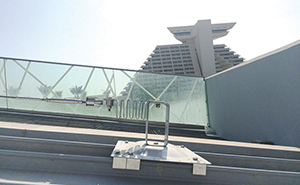
Horizontal life lines, Type C anchors, are tested for deformation, dynamic strength and static strength. This includes a dynamic test which requires the anchor to sustain a 200kg mass, freefalling from a specific height to generate a 12kN load (or two users). A further 100kg mass is then dropped, generating a further 9kN to represent a third person falling on the same system.
A further static test is also required. For metallic devices such as KeeLine, this requires the anchor to sustain a load of 12kN, 2kN more than previous standards, and hold this force for a minimum of 3 minutes.

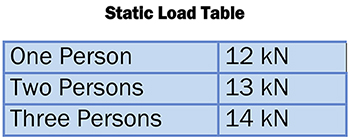
KeeLine Testing
KeeLine has been independently tested on a variety of roof types and has exceeded the test requirements of EN 795:2012.
When carrying out the dynamitic test, the anchors successfully sustained a 200kg mass in the first drop test and a further 100kg in the second drop test whilst still holding the initial 200kg.
As part of the system’s integrity testing, Kee Safety, applied a static load of 7.3kN to the system for 3 minutes.
What does this all mean?
KeeLine is one of the few lifeline systems which conforms to the EN 795:2012 and CEN/TC 16415. This does not mean that other anchor devices are non-compliant; however existing anchor devices which conform to older versions will need to be retested to the latest standard in time. All new products must be tested to EN 795:2012.

